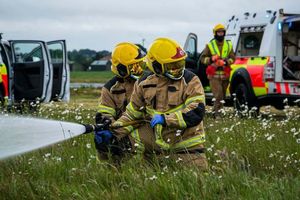Shropshire fire service making ‘significant reduction’ in ‘burden’ of false alarm calls
The county’s fire service says it is seeing “early indications” that there has been a “significant reduction” in its crews’ attendance at burdensome false alarms.
Shropshire Fire & Rescue Service was ordered to “address the burden of false alarms” – which make up more than 40 per cent of all its 999 call outs – in a critical report by inspectors at the end of 2024.

The issue was one of 30 Areas for Improvement and one cause of concern with five key elements that were identified by His Majesty’s Inspectorate of Constabulary and Fire and Rescue Services (HMICFRS).
Papers released before the annual meeting of Shropshire & Wrekin Fire Authority on Wednesday (June 25) sets out how the service is trying to “drive sustained improvements.” It says it is doing so across the board.
One of the scores of action points being worked on by the service is in reducing attendance at false alarms.
Inspectors reported that in the year ending March 31, 2024 the service attended 1,855 false alarms. That works out as an average of more than five each and every day.
The responses to automatic fire alarms made up 43.3 per cent of SFRS emergency incidents, compared to the overall England rate of 42.3 per cent.
The fire service website says it attends around 1,100 unwanted fire signals from automatic alarms ever year. The impacts on businesses, the Fire and Rescue Service and the public are “enormous”, it says.
Inspectors said that: “This means fire engines may not be available to respond to genuine incidents because they are attending false alarms.
“It also creates a risk to the public if more fire engines travel at high speed on the roads to respond to these incidents.”
SFRS has been trialing a “call challenging” policy since last year.
And a report to the meeting reads “Following a trial of a call challenging policy early indications are that there is a significant reduction of mobilisation and attendance at false alarm incidents.”
Inspectors had slated the service during its inspection for not doing enough to reduce unwanted fire signals.
In its report at the end of 2024 the inspectors said: “During our 2021 inspection, we highlighted as an area for improvement that the service should address the burden of false alarms.
“In this inspection, we found the service is taking only limited action to reduce the number of unwanted fire signals.”
The service began its trial on June 1, 2024 to try to reduce false fire signals, but at the end of the year inspectors said it was “too early to identify any sustained improvements.”
The service still attends automatic fire alarms that result in false alarms, including to those caused by cooking fumes.
The fire service’s website says: “Clearly the need for systems to provide early detection and warnings of a fire situation are imperative, but we also need to encourage a reduction of the incidence of unwanted fire signals.”
Recent call outs have been to Lowe Court, in Wellington, on Friday (June 20) which turned out to be a false alarm caused by fumes from cooking.
In the early hours of Friday a crews went to Birch Court, in Holyhead Road, Oakengates, to a call that turned out to be a smoke detector activation which proved to be a false alarm.
And just before then, crews had attended an automatic fire alarm activation which proved to be false alarm at Southwater Multi Storey Car Park, in Northfield Street, Telford.
More information is on the Shropshire Fire & Rescue Service website: False Alarms – what are they and how can I prevent them? | Shropshire Fire and Rescue Service





